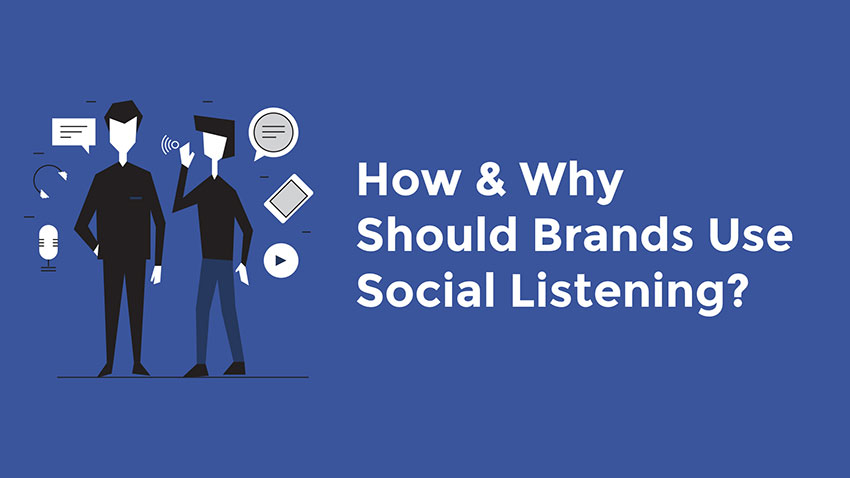
What is Social Listening, why it’s important, tools for Social Listening?
Social listening or Social media listening is the process of monitoring, analyzing and responding to conversations about your brand on social media. It’s important that you know what’s happening in your industry and how to respond as quickly as possible. This will help you stay ahead of potential threats or opportunities for growth. Social listening provides valuable insights into what people are saying about your brand online; it can also help you identify trends that could impact its reputation or sales performance over time (for example if people are talking negatively about a product or service). In this blog, we’ll discuss why social listening is so important for businesses today—and how you can get started with it!
What is social listening?
Social listening is the practice of listening to what people are saying about your brand on social media. It’s also called micro-targeting because it helps you find out what content resonates with your audience and which ones don’t.
Social listening can be done by a person or by software. For example, if you’re trying to market a new product or service, then it might be helpful for someone at HQ who works in marketing analytics to listen in real-time as news stories about your company are posted online so that we can keep track of trends and sentiment surrounding our brand name. This information will help us better understand how consumers feel about us—and if there’s anything we need to fix before launching new products or services! Social listening play’s key role in social media branding. Social listening should be one of the priorities in social media marketing strategy.
Why Social Listening is important
Social listening is a way to stay up to date with what your audience is saying about you. It allows you to identify trends and opportunities, which can help guide the growth of your business. If people are being vocal about something on social media, it’s likely because they have an opinion or concern about it—and that opinion or concern could be useful for your business! For example:
- If someone posts an image of their new puppy on Instagram but doesn’t tag the product in the photo, instead asking for suggestions on dog food items—the person might be looking into buying something like dog food online and those sales would be lost. Furthermore, the post has already lost its influence on those who were going to be influenced by it.
- When someone tweets “I love my new xyz footwear,” this could mean they loved xyz footwear and are satisfied with their product quality.
Social listening and social monitoring: what’s the difference
Social listening and social monitoring are two terms that often get used interchangeably. But they actually mean different things.
Social listening is more focused on social media platforms, while social monitoring is more focused on content. Social listening tools are designed to help you find out what people are saying about your brand, but not necessarily how it influences their behavior in other areas of life (like buying). Social media monitoring tools can help you understand what people are saying about a topic or event (like the news), but don’t provide any insights into how those conversations related to your business operations (for example, whether or not sales go up after an important announcement).
How to do social listening
To begin the process of listening to social media conversations, you’ll need a few tools. The most important thing is that you use the right tools for the job. We have listed below the best tools available for social listening. Before choosing any social listening tool do your own research before buying a subscription to the tool.
- Listen across different social media platforms: If someone mentions your brand in a tweet or Facebook post, there’s no point in hearing it if you only listen on Twitter. You should also listen across different platforms when monitoring mentions of competitors (and vice versa).
What are different Social Media Listening tools
There are a number of tools available to you. Hootsuite has been around since 2009 and is one of the most popular social listening platforms, but it’s not free. If you’re looking for a cheaper option, Sprout Social costs about $50 per month for its basic plan (which gives you access to 30+ tools). Smart Indox is another tool that costs less than $100 per month and offers more features than Hootsuite; however, it doesn’t have as many integrations with other platforms or analytics tools as Sprout does.
Radian6 offers a free plan with limited functionality; however, if your business needs more advanced analytics capabilities like advanced reporting or segmentation tools then this might not be the best fit for your needs since there are no plans starting at less than $200/month (the monthly cost will depend on how many users/customers).
How to create a social media listening dashboard
There are several social media listening platforms tools that can help you create a social media listening dashboard. Radian6, Meltwater, and Facebook’s Insights are just some of these options.
If you’re using Radian6 or Meltwater:
- Use their keyword alerts feature to set up alerts for keywords that you’d like to track. These will help you keep tabs on what your competitors are saying about your brand or product in order to stay ahead of them.
- Track how well each post performs by monitoring the engagement rate (percentage of likes) and shares/reposts per post.
Tips for social listening
There are a few steps you can take to ensure your social listening activity is successful.
- Listen to your audience: It’s important that you know who is reading and engaging with content on social media, so make sure that you monitor all of those channels. You should also pay attention to what they like, share or comment on in order to see how they feel about the brand or product they’re using.
- Listen to competitors: Just like knowing who your audience is, it will help inform how much time should be spent watching competitors’ posts because if there’s anything worth sharing from one competitor’s channel then chances are good others might as well! This type of information could save hours of research time later down the line when planning out which posts/products need attention first based on their popularity among other users (and therefore potential buyers).
Conclusion
Social media listening is a powerful tool to help your business grow. It provides a window into the minds of your customers and helps you understand what they’re thinking so that you can build better products and services for them. Social listening isn’t just about listening on social platforms, though; it also involves monitoring online conversations about those topics in order to gain insights into people’s preferences or behaviors. This allows companies to get ahead of trends before they become popular or popularized within their industry, which will allow them to stay ahead as competitors catch up with them—or worse yet, overtake them entirely!



0 Comments